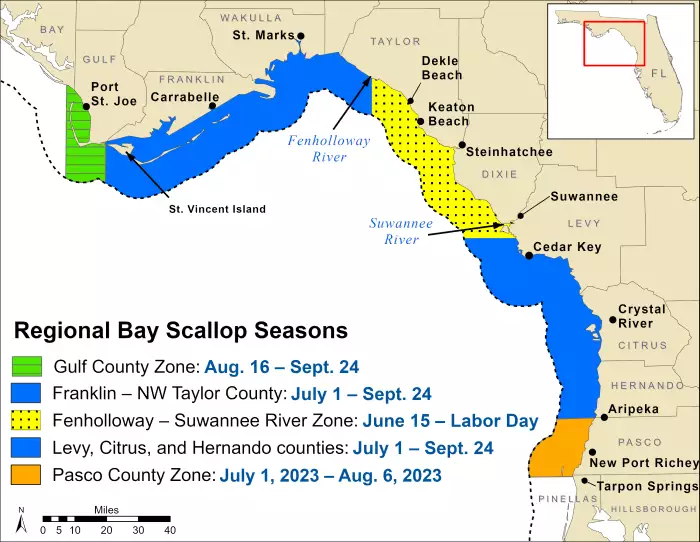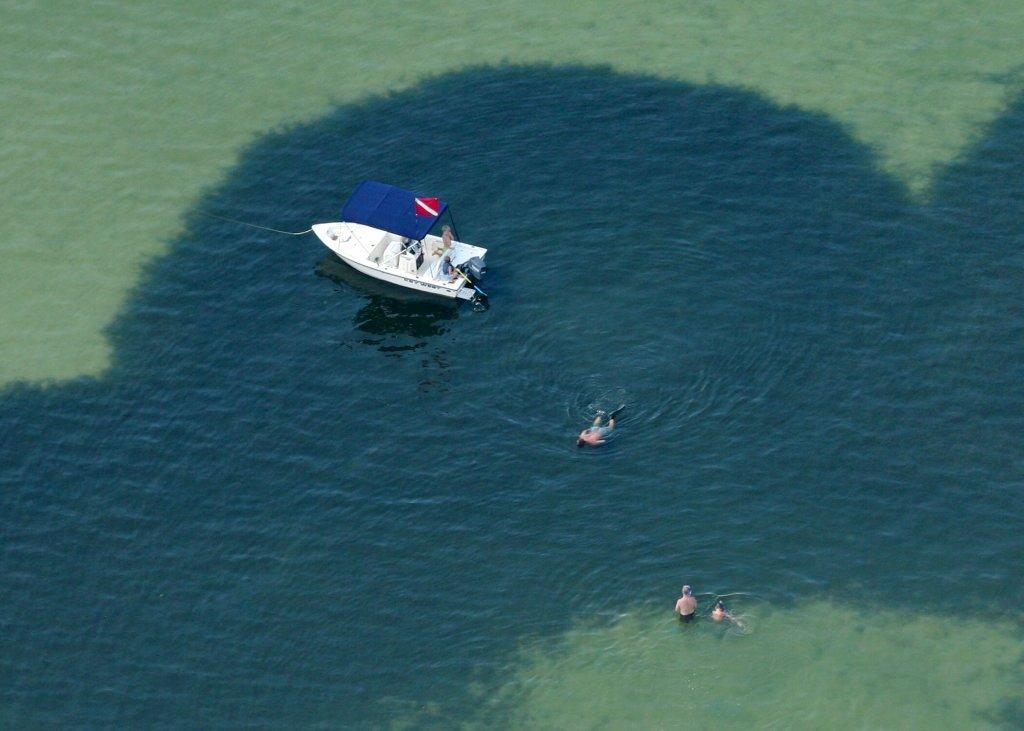Gulf County scallop season to open Wednesday
Gulf County’s recreational scallop season, which brings hundreds if not thousands of regional visitors to the area annually, will open on Wednesday, Aug. 16 and run consecutively through September 24.
This shortened season, which starts later in the year than in other Florida counties, is designed to allow scallops to reach larger sizes and keep populations within the St. Joseph Bay from being overly depleted.
Though exact scallop numbers within the St. Joseph Bay are a mystery at this time, certain things always remain the same.
With an influx of visitors set to take advantage of Gulf County’s scalloping opportunities, tourism and environmental officials are increasing efforts to disseminate information regarding the rules and regulations associated.

Bag limits, regulations
Bag and vessel limits remain two gallons of whole bay scallops in the shell or one pint of bay scallop meat per person, with a maximum of 10 gallons of whole bay scallops in the shell or a 1/2 gallon (4 pints) bay scallop meat per vessel.
Vessel limits do not allow an individual to exceed their personal bag limit.
Scallops may be collected by hand or with a landing or dip net.
There is no commercial harvest of bay scallops allowed in Florida.
Direct and continuous transit of legally-harvested bay scallops is allowed through closed areas. Boaters may not stop their vessels in waters that are closed to harvest and must proceed directly to the dock or ramp to land scallops in a closed area.
All scallopers must have a saltwater fishing license, which can be purchased at https://myfwc.com/license/.
For information on bay scallop regulations, visit MyFWC.com/Marine and click on “Recreational Regulations” and “Bay Scallops” under the “Crabs, Lobster and other Shellfish” tab.
Boater, scalloper safety
When scalloping in open water, divers should stay within 300-feet of a properly-displayed divers-down flag or device, and within 100-feet of a properly displayed divers-down flag or device if on a river, inlet or navigation channel.
Boat operators traveling within 300-feet of a divers-down flag or device in open water or within 100 feet of one on a river, inlet or navigational channel must slow to idle speed.
Boaters are also asked to be mindful of the sea grass, as scallops are often found in shallower waters.
Stow it, don’t throw it
Scallopers are asked not to discard scallop shells in inshore waters commonly used for recreational activities, such as near boat ramps or swimming areas. Piles of discarded scallop shells can create hazards for swimmers and damage seagrass habitat. Scallop shells can be discarded in a trash receptacle or in larger bodies of water where they are more likely to disperse.
Citizen science
Done for the day? Help FWC’s scallop researchers by completing an online survey at svy.mk/bayscallops. Harvesters can indicate where they harvested scallops, how many they collected and how long it took to harvest them. Participants can email BayScallops@MyFWC.com to ask questions or send additional information.
Learn more about how FWC scientists monitor Florida’s scallops by visiting MyFWC.com/Research and clicking on “Saltwater,” “Bay Scallops” and “Bay Scallop Season and Abundance Survey.”



Thanks for the update